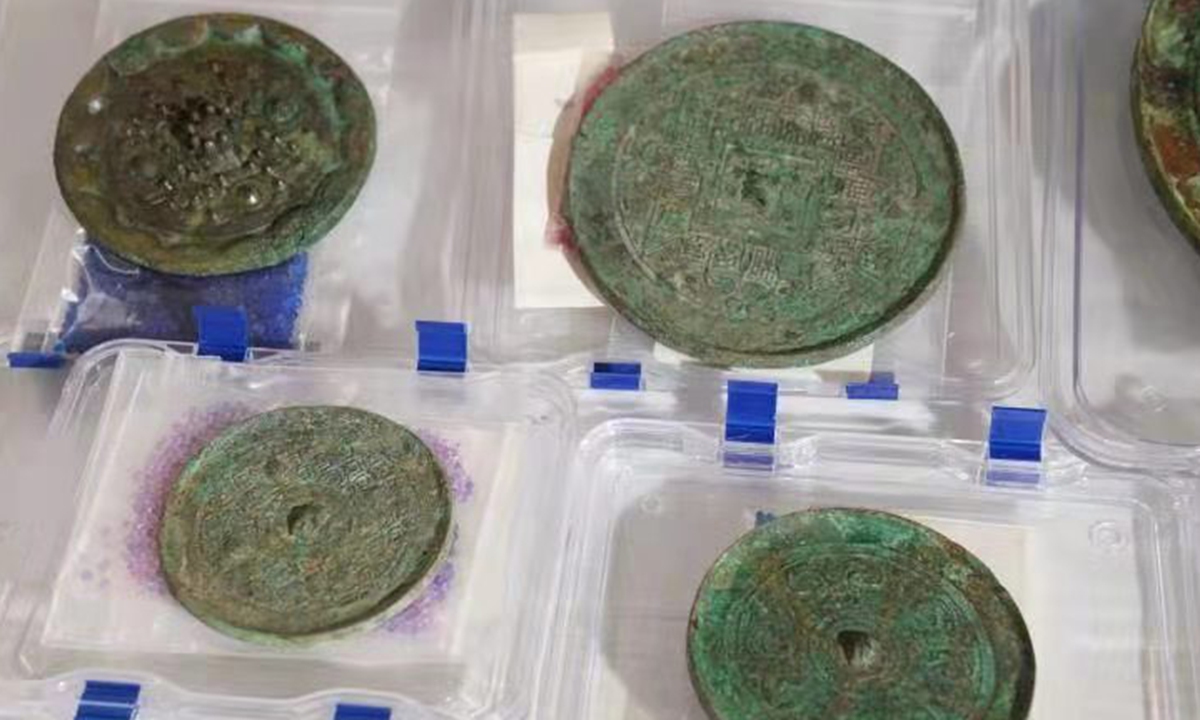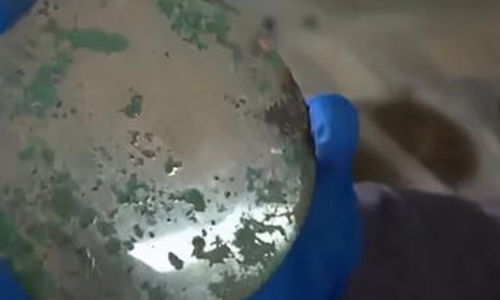
Bronze mirrors that dating to the Western Han Dynasty (206BC-AD25). Photo: Sina Weibo
More than 80 fine bronze mirrors dating to the Western Han Dynasty (206BC-AD25) were recently unearthed at a large-scale ancient tomb in Qinhan New City, the Xixian New Area of Northwest China's Shaanxi Province.
This new discovery has stunned archaeologists as some of the mirrors, which have been finely restored, still remain bright and very reflective despite the fact that they were buried underground 2,000 years ago.
These mirrors' deceptively clear reflections have become a hot topic among intrigued netizens on China's Twitter-like Sina Weibo.
"These are an actual example that the props crew for costume dramas can refer to in order to change their imagined ancient bronze mirrors that are always dark-yellow with distorted reflections," said a netizen on Sina Weibo.

The reflective side of the discovered Bronze mirrors. Photo: Sina Weibo
The non-reflective side of the mirrors have exquisite patterns such as clouds, while one in particular has four eye-catching Chinese characters
jia chang fu gui, which roughly translates to "home of prosperity."
The discovered bronze mirrors vary in size. The largest is 22 centimeters in diameter while the diameter of the smallest is only seven centimeters. In addition to the mirrors, more than 2,000 relics including pottery, jade and iron wares were also discovered at the site.
"The newly discovered mirrors are great references for archaeologists to further study the material culture of the early and middle periods of the Western Han Dynasty. They are also excellent examples of the aesthetic taste of ancient Chinese and possess both historical and artistic values," an archaeologist in Xi'an told the Global Times on Monday.





